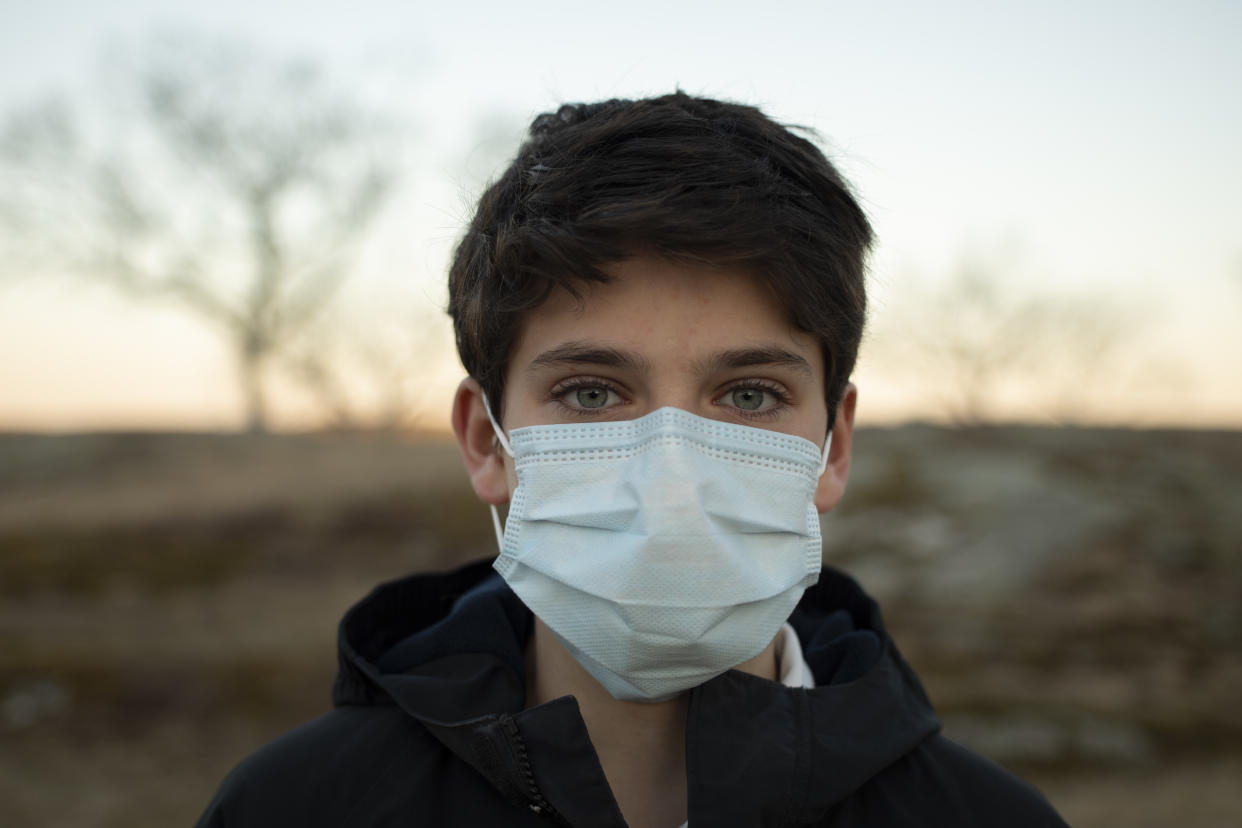COVID-19 and kids: Experts explain why cases of rare MIS-C are rising

Just days after the American Academy of Pediatrics revealed that cases of COVID-19 in children are at their highest since the pandemic began, reports are trickling in of an uptick in diagnoses of multi-system inflammatory syndrome in children (MIS-C), a serious complication of the virus.
This week, Nebraska’s Douglas County Health Department reported its third case of MIS-C since June. Also this week, the Louisiana Department of Health said that a fifth child in the state has died of MIS-C. Cases continue to crop up across the country — Pasadena, Calif., just saw its first case of MIS-C, as did Idaho’s Ada County. And there are many more.
MIS-C is a condition in which different body parts can become inflamed, including the heart, lungs, kidneys, brain, skin, eyes or gastrointestinal organs, the Centers for Disease Control and Prevention says. Symptoms typically include the following, according to the CDC:
fever
abdominal pain
vomiting
diarrhea
neck pain
rash
bloodshot eyes
feeling extra tired
It’s unclear at this time exactly what causes MIS-C, the CDC says, but many children with MIS-C had COVID-19 or had been around someone with COVID-19.
As of Oct. 30, there were 1,163 reported cases of MIS-C in the U.S., and 20 deaths from the syndrome, according to CDC data. Most cases of MIS-C are in children younger than 14, and more than 75 percent of reported cases have occurred in children who are Hispanic or Latino, the CDC says.
While the news is scary, doctors aren’t shocked.
“This is very sobering news, but I’m afraid it was expected,” Dr. William Schaffner, an infectious disease specialist and professor at the Vanderbilt University School of Medicine, tells Yahoo Life. “After all, we’re having widespread transmission of the COVID virus throughout most of the country now, and it’s one of the consequences. The more COVID-19 we have out there, the more cases of MIS-C we’ll see.”
“It’s not surprising given increasing number of cases,” Dr. Richard Watkins, an infectious disease physician in Akron, Ohio, and a professor of medicine at the Northeast Ohio Medical University, tells Yahoo Life. However, he stresses, MIS-C is “still rare.”
Dr. Daniel Ganjian, a pediatrician at Providence Saint John’s Health Center in Santa Monica, Calif., tells Yahoo Life that the increase in cases is “expected,” but, he points out, “it’s not growing exponentially, where we’re worried that it’s going out of control.”
MIS-C cases seem to follow a predictable pattern, Dr. Christopher Carroll, a pediatric critical care physician at Connecticut Children’s Medical Center who has been researching COVID-19 in children, tells Yahoo Life. “We have found that there is an increased risk of MIS-C in the two- to four-week period after a peak in COVID-19 cases,” he says. “So, as COVID19 cases rise in a community, MIS-C cases will also rise a couple of weeks later.”
There could be another factor behind the increase, though. “Awareness of the condition and its diagnostic criteria is increasing, enabling doctors to make the diagnosis,” Dr. Amesh A. Adalja, senior scholar at the Johns Hopkins Center for Health Security, tells Yahoo Life.
Unfortunately, things will likely get worse before they get better. “We will likely see a further increase over the winter,” Watkins says.
There are a few things parents can do to protect their children.
Given that children typically contract COVID-19 from family members, Schaffner recommends that entire families try to do their part to protect themselves and their children. “Parents and everyone around them should be wearing masks, social distancing and avoiding large groups,” he says. “But children have to be careful also.”
The CDC also recommends that parents be aware of the signs of MIS-C and seek emergency care “right away” if a child shows any of the following symptoms:
trouble breathing
pain or pressure in the chest that does not go away
new confusion
inability to wake or stay awake
bluish lips or face
severe abdominal pain
If children are going to in-person schooling, Schaffner recommends that parents talk to them about safety protocols and why it’s so important to follow them.
But Ganjian warns against scaring children about MIS-C. “You don’t want them to be afraid,” he says. “When stress hormones go up, their immune system’s ability goes down. Let them have as normal a childhood as possible, with as much fun as possible — even during a pandemic. Just be safe about it.”
Carroll urges parents to be cautious but not to panic. “It is important to remember that, overall, the risk of MIS-C is relatively low in children,” he says.
For the latest coronavirus news and updates, follow along at https://news.yahoo.com/coronavirus. According to experts, people over 60 and those who are immunocompromised continue to be the most at risk. If you have questions, please reference the CDC’s and WHO’s resource guides.
How to maintain your physical and mental health during the pandemic
Taking care of a loved one with COVID-19? Here’s how to stay healthy
Q&A with Dr. Kavita Patel: How to keep your family safe and maintain your mental health
Read more from Yahoo Life
CDC: Pregnant women have a higher risk of complications and death from COVID-19
COVID-19 cases in kids are at their highest since pandemic began, report says
Want lifestyle and wellness news delivered to your inbox? Sign up here for Yahoo Life’s newsletter.

